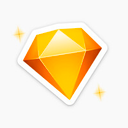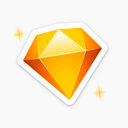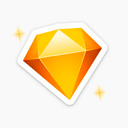Sketch vs Maze (2026 Comparison)

Sketch offers a comprehensive suite of design tools, making it a favorite among designers. Its extensive plugin library and user-friendly interface enhance productivity and creativity.
- Comprehensive design tools
- Extensive plugin library
- User-friendly interface
- Limited testing features
- Requires MacOS
- Higher learning curve
Free plan?
NoStarting price
$10 per month per user
Maze excels in user testing, providing data-driven insights and seamless integrations. Its focus on testing makes it an invaluable asset for optimizing user experiences.
- Excellent user testing
- Seamless integrations
- Data-driven insights
- Limited design tools
- Subscription-based pricing
- Requires internet connection
Free plan?
YesStarting price
$99 per monthWhat is Sketch?
Sketch is a powerful design tool that caters to the needs of UI/UX designers. It offers a comprehensive suite of features for creating wireframes, prototypes, and high-fidelity designs. With its intuitive interface and robust plugin ecosystem, Sketch streamlines the design process, making it easier for designers to collaborate and iterate on their projects. Whether you're working on a mobile app or a website, Sketch provides the tools you need to bring your ideas to life efficiently.
What is Maze?
Maze is a user testing platform that empowers teams to validate their design decisions through real user feedback. It allows you to create tests, gather insights, and make data-driven decisions to enhance user experiences. With Maze, you can quickly test prototypes, concepts, and even live websites, ensuring that your designs resonate with your target audience. Its seamless integration with design tools like Sketch makes it an invaluable asset for designers looking to optimize their workflows and deliver user-centric products.
Pros and Cons of Sketch vs Maze

Pros & Cons of Sketch
- Sketch offers a wide range of design tools that cater to various design needs, from wireframing to high-fidelity prototyping. Its extensive plugin library further enhances its capabilities, making it a favorite among designers.
- With a vast array of plugins available, Sketch allows users to customize their design experience and extend the tool's functionality. This flexibility makes it a versatile choice for designers.
- Sketch's intuitive interface makes it accessible to both beginners and experienced designers. Its drag-and-drop functionality and shortcuts enhance productivity, allowing users to create designs efficiently.
- While Sketch offers some testing capabilities, it is not as comprehensive as dedicated testing tools like Maze. Designers looking for in-depth user testing may find Sketch lacking in this area.
- Sketch is only available on MacOS, which can be a limitation for teams using other operating systems. This restriction may require additional resources for cross-platform compatibility.

Pros & Cons of Maze
- Maze excels in user testing, providing a platform to gather real user feedback and insights. Its seamless integration with design tools makes it easy to test prototypes and concepts.
- Maze offers seamless integration with popular design tools, enhancing its testing capabilities. This feature allows teams to streamline their workflows and optimize their design processes.
- Maze provides detailed insights into user interactions and preferences, allowing teams to make data-driven design decisions. This capability is crucial for creating user-centric products.
- While Maze offers some design tools, it is primarily focused on testing and feedback. Designers looking for comprehensive design capabilities may find Maze lacking in this area.
- Maze operates on a subscription-based pricing model, which may not be suitable for all budgets. Teams should consider their financial resources before committing to a subscription.
Sketch vs Maze: At A Glance
Value to Price
Sketch offers a competitive pricing model that aligns well with its feature set, making it a cost-effective choice for designers. Its extensive plugin library adds significant value, allowing users to customize their experience. Maze, on the other hand, provides excellent value through its comprehensive testing capabilities, which are crucial for data-driven design decisions. If you're looking for a tool that offers more bang for your buck in terms of testing, Maze might be the better option.
Ease of Use
Sketch is known for its user-friendly interface, which makes it accessible to both beginners and experienced designers. Its intuitive design tools and shortcuts enhance productivity. Maze excels in ease of use as well, with a straightforward setup process and seamless integration with design tools. If you prioritize a smooth user experience and quick onboarding, Maze stands out as the more user-friendly option.
Functionality
Sketch provides a robust set of design tools that cater to various design needs, from wireframing to high-fidelity prototyping. Its functionality is further enhanced by a wide range of plugins. Maze, however, offers specialized functionality for user testing, allowing teams to gather actionable insights and validate design decisions. If your focus is on comprehensive testing capabilities, Maze is the superior choice.
Scalability
Sketch is scalable for design teams of all sizes, offering collaboration features that grow with your team. Its cloud-based platform ensures that your projects are accessible from anywhere. Maze also scales well, accommodating growing teams with its collaborative testing features. If you're planning to expand your team and need a tool that scales effortlessly, Maze is a strong contender.
Integrations
Sketch boasts a rich ecosystem of integrations, allowing users to connect with various design and productivity tools. Its open API encourages developers to create custom plugins. Maze integrates seamlessly with popular design tools, enhancing its testing capabilities. If you rely heavily on integrations to streamline your workflow, Maze offers a more comprehensive integration suite.
Customer Support
Sketch provides reliable customer support through its extensive documentation and active community forums. Users can find solutions to common issues quickly. Maze offers responsive customer support, with dedicated resources to assist users in optimizing their testing processes. If you value prompt and effective customer support, Maze has the edge.
Security
Sketch ensures data security with its cloud-based platform, offering secure storage and sharing options. Its regular updates address potential vulnerabilities. Maze prioritizes security as well, with robust measures to protect user data during testing. If security is a top concern for your projects, Maze provides a secure environment for user testing.
Overall Rating
Both Sketch and Maze are highly rated tools in their respective domains. Sketch excels in design capabilities, while Maze shines in user testing. Your choice should depend on whether your primary need is design or testing. If testing is your main focus, Maze is the better-rated tool.
Sketch vs Maze: A Detailed Breakdown of Key Features
Prototyping
Sketch offers a robust prototyping feature that allows you to create interactive designs with ease. Its intuitive interface and drag-and-drop functionality make it a favorite among designers. Maze, while offering prototyping capabilities, focuses more on testing and feedback collection. If your primary need is to create detailed prototypes, Sketch is the better choice.
User Testing
Maze excels in user testing, providing a platform to gather real user feedback and insights. Its seamless integration with design tools makes it easy to test prototypes and concepts. Sketch, while offering some testing features, is not as comprehensive as Maze in this area. If user testing is a priority, Maze is the superior tool.
Collaboration
Both Sketch and Maze offer collaboration features, but Maze stands out with its focus on team-based testing and feedback. Sketch provides collaboration through its cloud platform, allowing designers to work together on projects. If you need a tool that enhances team collaboration, Maze is the better option.
Design Tools
Sketch is renowned for its comprehensive design tools, catering to a wide range of design needs. Its extensive plugin library further enhances its capabilities. Maze, while offering design tools, is more focused on testing and feedback. If your primary focus is on design, Sketch is the tool to choose.
Feedback Collection
Maze excels in feedback collection, providing detailed insights into user interactions and preferences. Its testing capabilities allow for data-driven design decisions. Sketch offers feedback features but is not as specialized as Maze. If collecting user feedback is crucial, Maze is the better choice.
Integration with Design Tools
Maze offers seamless integration with popular design tools, enhancing its testing capabilities. Sketch also integrates with various tools, but Maze's focus on testing makes its integrations more comprehensive. If you rely on integrations for testing, Maze is the superior option.
Pricing Comparison of Sketch and Maze
To assist you in making an informed choice, we’ve outlined the pricing plans and essential features of Sketch and Maze. This comparison will highlight the best option for your design and testing needs.

Sketch Pricing Plans
- Collaborate in real-time with team members seamlessly.
- Access unlimited free Viewers for easy sharing.
- Inspect designs, test prototypes, and handoff to developers.
- Preview designs on iPhone or iPad for mobile testing.
- Work privately offline with local document saving.
- Keep your license forever with one-time purchase.
- Receive one year of updates for the Mac app.
- Excludes collaborative features and web app access.
- Unlimited online storage for all design files.
- Invoice-based billing for streamlined financial processes.
- Powerful permissions directory for team management.
- Priority support and dedicated customer success manager.

Maze Pricing Plans
- Up to 7 blocks for comprehensive usability testing.
- 1 study per month to kickstart your research journey.
- 5 seats to collaborate with your team.
- Ideal for individuals starting with usability testing.
- AI question rephrasing to enhance survey quality.
- Conditional logic for dynamic survey paths.
- PRO templates for professional-grade research.
- CSV export for data analysis and reporting.
- Open card sorting for user-centric information architecture.
- Tree testing for evaluating site structure.
- Variant Comparison for A/B testing and optimization.
- Advanced panel targeting criteria for precise participant selection.
Our Rating Methodology
We thoroughly evaluate each design and testing tool, focusing on key aspects like functionality, ease of use, and integrations. By analyzing user feedback and conducting hands-on testing, we ensure our recommendations are reliable. Each factor is weighted to provide an accurate final rating, helping you make informed decisions.
Sketch or Maze: Which One Matches Your Business Needs?
Choose Sketch If You Need ...
- Comprehensive design capabilities
If you are a designer looking for a tool with comprehensive design capabilities, Sketch is the ideal choice. Its extensive design tools and plugin library make it perfect for creating detailed prototypes and high-fidelity designs.
- MacOS users
If you are a MacOS user, Sketch is the best option for you. Its compatibility with MacOS ensures seamless performance and integration with other Mac-based tools, making it a favorite among Apple users.
Choose Maze If You Need ...
- Focus on user testing
If your primary focus is on user testing and gathering data-driven insights, Maze is the superior choice. Its comprehensive testing capabilities and seamless integrations make it an invaluable asset for optimizing user experiences.
- Team collaboration
If you need a tool that enhances team collaboration, Maze is the better option. Its focus on team-based testing and feedback collection ensures that your team can work together effectively to create user-centric products.
Frequently Asked Questions
 Which tool is better for prototyping, Sketch or Maze?
Which tool is better for prototyping, Sketch or Maze?
 Is Maze suitable for design tasks?
Is Maze suitable for design tasks?
 Can Sketch be used on Windows?
Can Sketch be used on Windows?
 Does Maze offer seamless integrations with design tools?
Does Maze offer seamless integrations with design tools?
 Which tool provides better customer support, Sketch or Maze?
Which tool provides better customer support, Sketch or Maze?
 Is Sketch suitable for team collaboration?
Is Sketch suitable for team collaboration?

Anastasia Belyh
Anastasia Belyh is a senior tech writer with over 15 years of experience in marketing, sales, and business software. Having worked in investment banking, management consulting, and founded multiple companies, her in-depth knowledge and hands-on expertise make her software reviews authoritative, trustworthy, and highly practical for business decision-makers.



